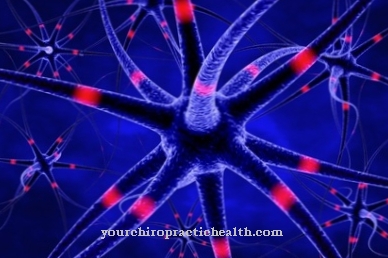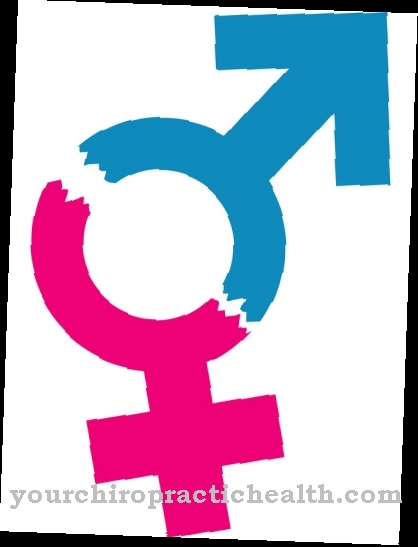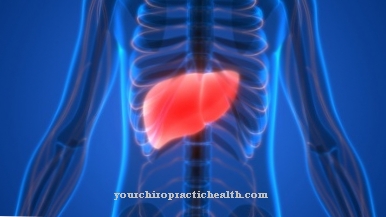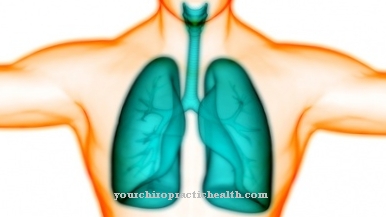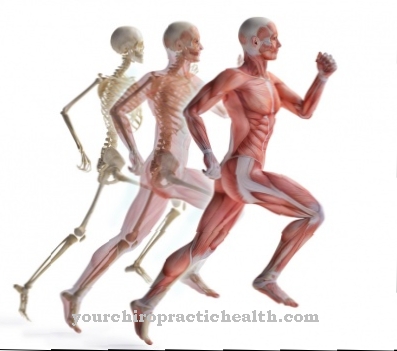As Respiratory chain a cascade of electron transfer steps (redox reactions) in the metabolism of the cells of almost all living things is called. At the end of the respiratory chain, which takes place in the mitochondria, the power plants of the cells, ATP (adenosine triphosphate) and water (H2O) are produced. The ATP contains the conserved energy that can be transported over short distances, which comes from the respiratory chain and is available for endothermic, i.e. energy-requiring, metabolic processes.
What is the respiratory chain?

The respiratory chain as part of cell respiration includes a chain of redox reactions that take place one after the other, i.e. electron-donating and electron-accepting reactions that are catalytically controlled by enzymes. The overall strongly exothermic process, which corresponds to the combustion of hydrogen to water (oxyhydrogen reaction), would otherwise thermally destroy the cells or even cause them to explode.
The respiratory chain takes place in the inner membrane of the mitochondria in four successive redox complexes: the electrons transferred to the next level each give off part of their energy. At the same time, a proton gradient builds up due to the protons (H +) released into the space between the inner and outer membrane (intermembrane space) of the mitochondria. The protons try to migrate from the area of high concentration to the area of low concentration - in this case the inner membrane.
This only works in conjunction with the enzyme ATP synthase, a tunnel protein. During the passage through the tunnel protein, the protons give off energy, which is converted into ATP in the course of oxidative phosphorylation of ADP (adenosine diphosphate) and inorganic phosphate. The ATP serves as an omnipotent energy carrier for almost all energy-consuming metabolic processes in the body. When the energy is used in metabolic processes, it is broken down again into ADP with exothermic splitting off of a phosphate group.
Function & task
The respiratory chain has the task and function, in connection with the citric acid cycle that also takes place in the mitochondria, to provide the body with sufficient usable energy. Ultimately, the breakdown processes of food components of the substance groups carbohydrates, fats and proteins flow into the respiratory chain in the last part of the breakdown processes, in which the energy contained in the food components is made available to the body in the form of energetically usable ATP.
The main benefit for the human metabolism is that the chemical energy contained in the food components is not converted exclusively and uncontrollably into heat energy, but that it is stored in the form of ATP. The ATP allows the body to use the stored energy at different times and in different locations as required. Almost all energy-consuming metabolic processes rely on ATP as an energy supplier.
The respiratory chain comprises four so-called complexes (I, II, III, IV) and, as a last step, the phosphorylation of ADP to ATP, which some authors also refer to as complex V. In the two electron transfer chains I and II, enzyme complexes in connection with ubiquinone, NAD / NADH (nicotinamide adenine dinucleotide) and FAD (flavin adenine dinucleotide) play an important role. The processes in complexes III and IV also take place with the participation of ubiquinol or the oxidized ubiquinone and cytochrome c oxidase, which oxidizes to cytochrome c. At the same time, oxygen is reduced to water (H2O) with the addition of 2 H + ions.
The respiratory chain can be viewed as a kind of open cycle in which the enzymatic catalysts involved regenerate themselves and intervene again in the material cycle. This turns out to be particularly energy-efficient for the body's metabolism and particularly efficient with regard to the use of resources, due to the perfect recycling of the biocatalysts (enzymes) involved.
Illnesses & ailments
The respiratory chain contains a cascade of electron transfers in which many substances and, above all, complex enzymatic processes are involved in a kind of biocatalytic process. If one of these processes is disturbed, the respiratory chain itself can be disturbed or, in extreme cases, come to a complete standstill.
In principle, a number of genetic defects can also occur in the chromosome set or, as well as genetic defects, exclusively in the separate mitochondrial DNA. If there is a mitochondrial genetic defect, it can only come from the mother, because the man's separate mitochondrial DNA is only in the tail of the sperm, which is shed and excreted before the sperm penetrates the egg.
Acquired disorders are also possible beyond genetically caused disorders in the respiratory chain. B. caused by natural or artificial inhibitors of the respiratory chain. A number of substances are known that inhibit the respiratory chain at a defined point so that the respiratory chain is completely interrupted or only functions inadequately. Other substances act as so-called decouplers (protonophores), which make the oxidation steps run significantly faster and lead to an increased demand for oxygen. Here, too, there are natural and artificial decouplers.
As inhibitors z. B. some antibiotics and fungicides used e.g. T. attack on complexes I, II or III. The antibiotic oligomycin has a direct inhibitory effect on the process of ATP synthase, so that a decreased ATP synthesis with decreased oxygen consumption occurs. The brown adipose tissue also acts as a natural decoupler, which is able to convert the energy directly into heat without going through ATP. Functional disorders in the respiratory chain are usually noticeable through reduced performance and through frequent or constant tiredness and fatigue.

